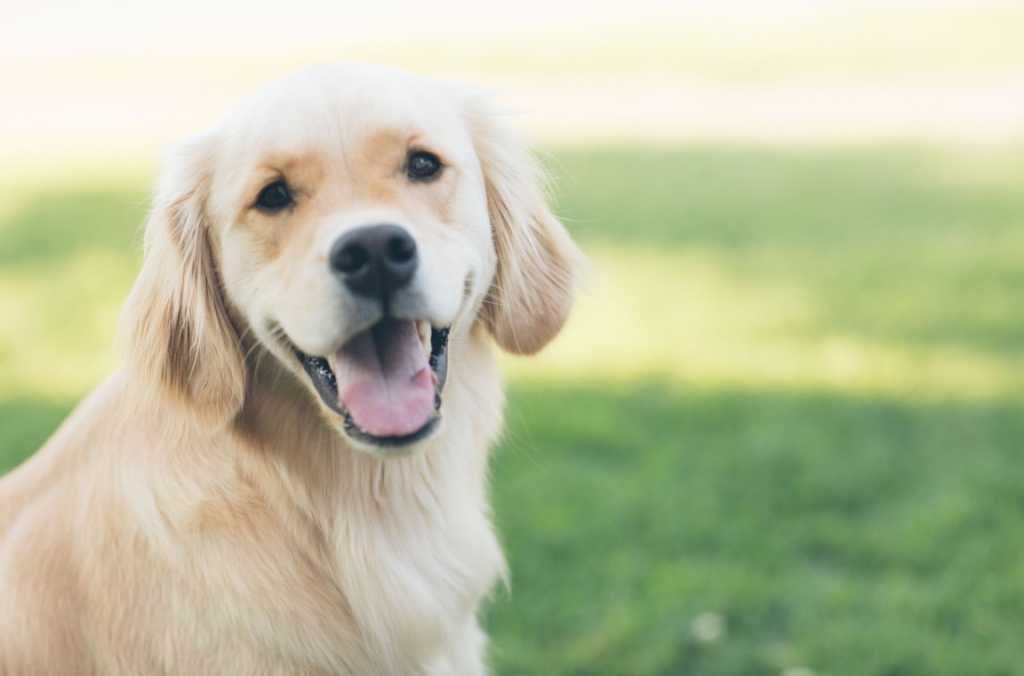With Spring comes one dreaded constant for us humans – hay fever. While we’re often concerned with avoiding pollen, we may be wondering whether our four-legged friends can suffer from the springtime symptoms too. Working alongside vet approved dog food brand Barking Heads, vet Dr Scott Miller reveals how dogs can be affected by hay fever, the warning signs to look out for and how to treat it.
As with humans, dogs can get seasonal allergies, and pollen is often the main culprit – particularly during the Spring and early Summer due to flowers blooming and bees pollinating.
When affected by hay fever, a dog’s body will react by releasing histamines to combat pollen during an allergic reaction. This can lead to inflammation, irritation and itchiness for your pup.
What are the symptoms of hay fever in dogs?
Like any other allergic reaction, there are some distinct symptoms to look out for. If you’re unsure whether your dog’s symptoms are related to hay fever, Barking Heads’ Head to Paw Examination Guide can help to rule out some other possibilities.
The most common hay fever symptoms to look out for are:
- Runny nose
- Frequent sneezing
- Irritated and itchy eyes
- Itchy skin
- Redness and rashes on skin (most commonly face, legs and paws)
- Licking or biting paws
- Watery eyes
Your pup’s skin is likely to be the most obvious sign of whether or not they are suffering from hay fever as the itching may lead to sore patches of skin or even bald patches on the dog’s skin, which have itched to excess and led their coat to deteriorate. If you do notice sore spots, you can watch your pet’s behaviour for signs to see if your dog is in pain.
Are some dogs more likely to get hay fever than others?
Like humans, hay fever can affect both large-breed dogs and small-breed dogs. Although, some breeds are more likely to suffer from this seasonal allergy. This is due to some breeds being predisposed to allergies, like hay fever, due to features such as coat type or nose shape. Some pure breeds are also naturally more sensitive to allergens, including:
- Dalmatians
- Irish Setters
- Poodles
- Schnauzers
- Terriers
How can hay fever in dogs be treated?
When it comes to any illness, speaking to or visiting your vet must be your first priority for advice on the best next step for you and your pooch, as dogs can often be suited to different treatments (even if they are the same breed).
Your vet may prescribe one or more of the following treatments:
- Medicated shampoos
- Antihistamines
- Medicated skin sprays or creams
- Biotherapy (to activate the immune system), which can be better for large breeds as it is the most cost-effective.
- Medication to reduce inflammation and relieve itching
- Ear or eye drops
How can I help my dog with hay fever?
Once your vet has put you on the right course of action for your pup, here are some other steps you can take to keep the hay fever at bay in your dog.
- Wipe your dog’s coat down after walks to remove any pollen that may have stuck
- Regularly groom your dog during pollen seasons
- Walk your dog when the pollen count is lowest in the day (usually early in the morning or later in the evening)
- Wash your dog’s bedding and other fibrous items your dog may play on to remove any stray pollen particles
- Once your dog is on the path to recovery, you can try using grain-free dog food, which is better suited to allergy-prone dogs and can help their coat regain its shine
But no matter what you feed them, keep an eye on your pup’s condition in these more floral months so you can enjoy spring with minimal sneezing and skin irritation.



